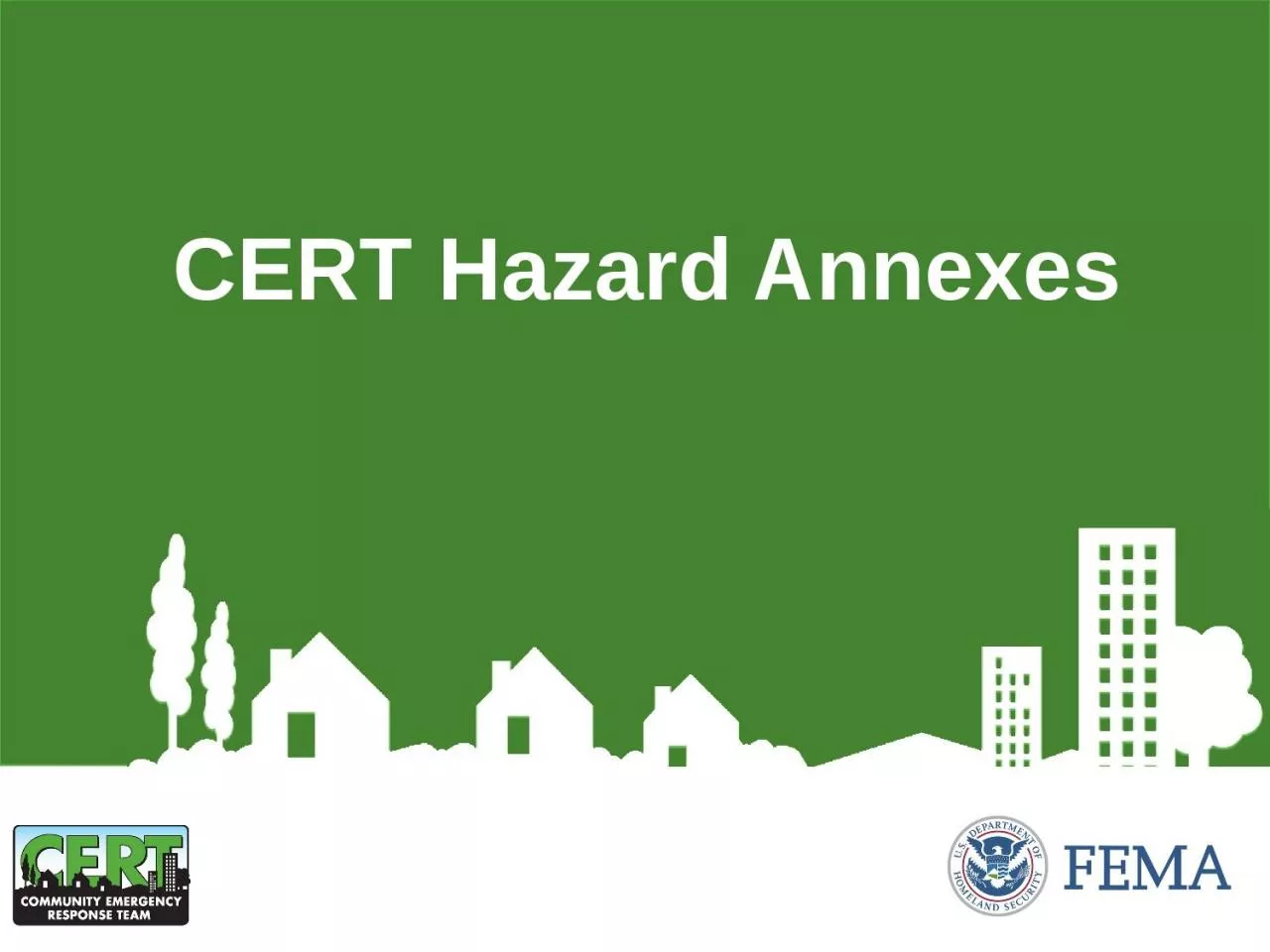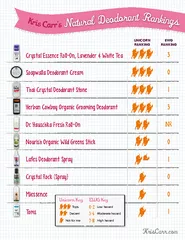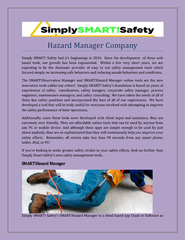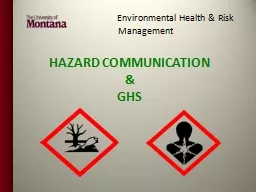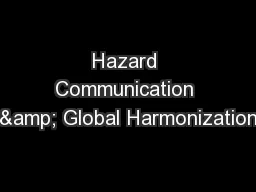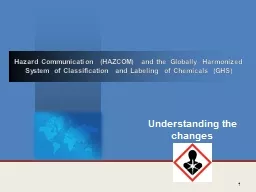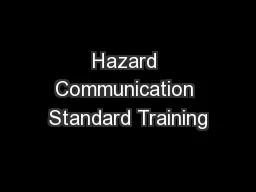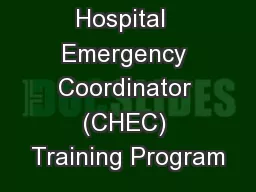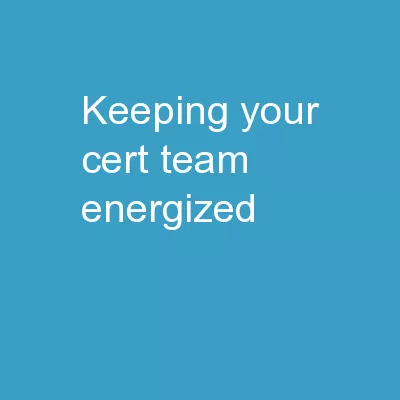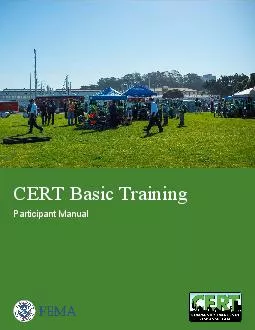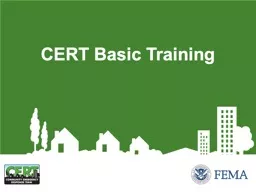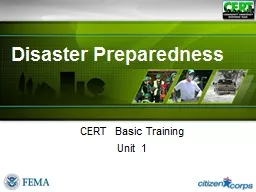PPT-CERT Hazard Annexes CERT
Author : lauren | Published Date : 2022-06-11
Hazard Annex 1 Avalanche Introduction Annex 1 An avalanche can travel as fast as 80 miles per hour mph and when it stops the snow debris left behind can become
Presentation Embed Code
Download Presentation
Download Presentation The PPT/PDF document "CERT Hazard Annexes CERT" is the property of its rightful owner. Permission is granted to download and print the materials on this website for personal, non-commercial use only, and to display it on your personal computer provided you do not modify the materials and that you retain all copyright notices contained in the materials. By downloading content from our website, you accept the terms of this agreement.
CERT Hazard Annexes CERT: Transcript
Download Rules Of Document
"CERT Hazard Annexes CERT"The content belongs to its owner. You may download and print it for personal use, without modification, and keep all copyright notices. By downloading, you agree to these terms.
Related Documents

